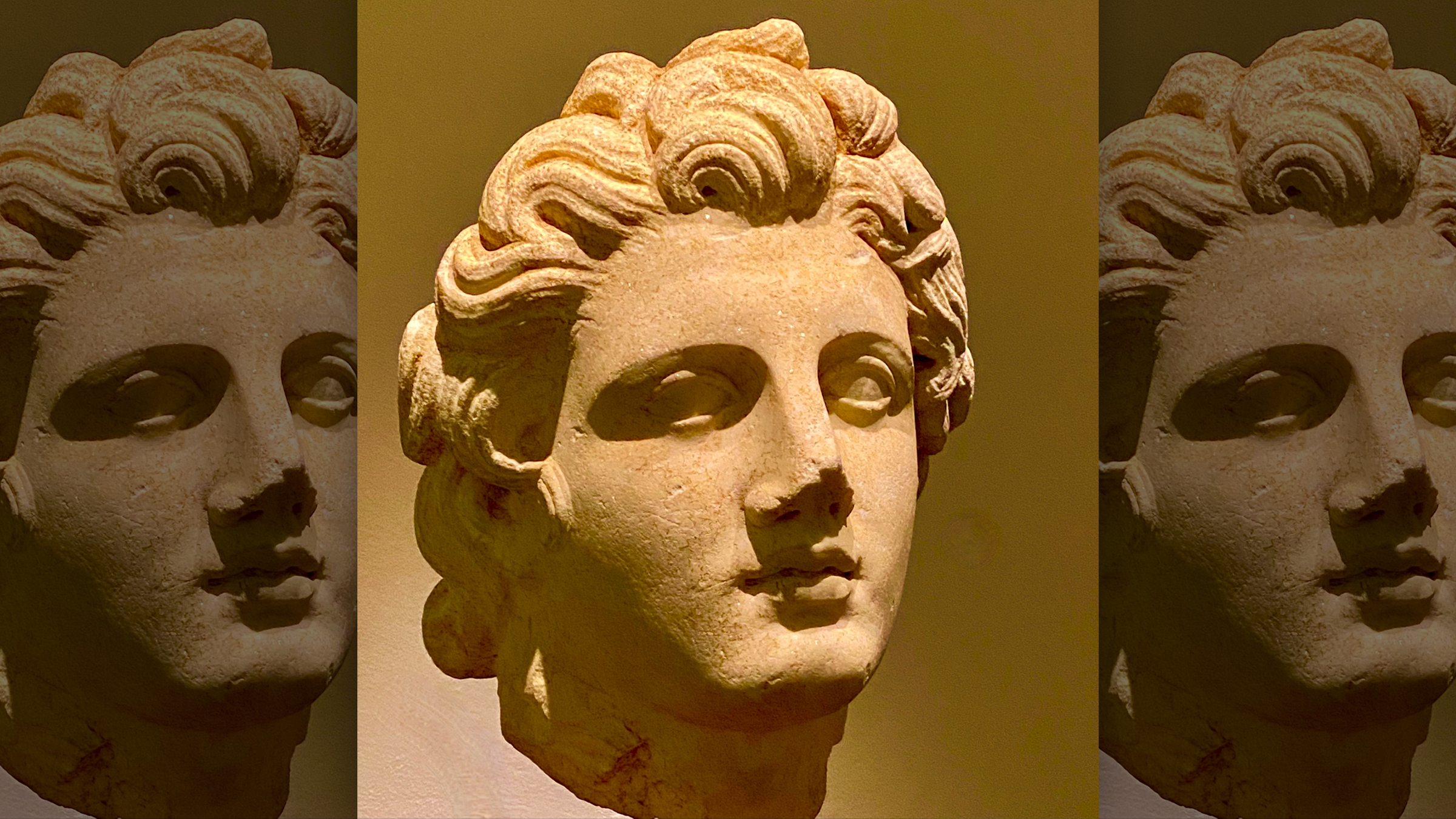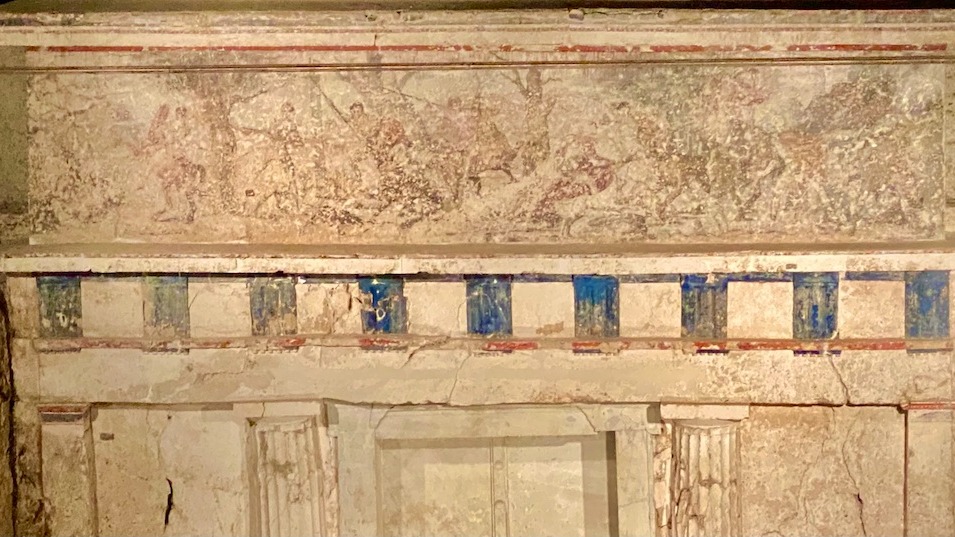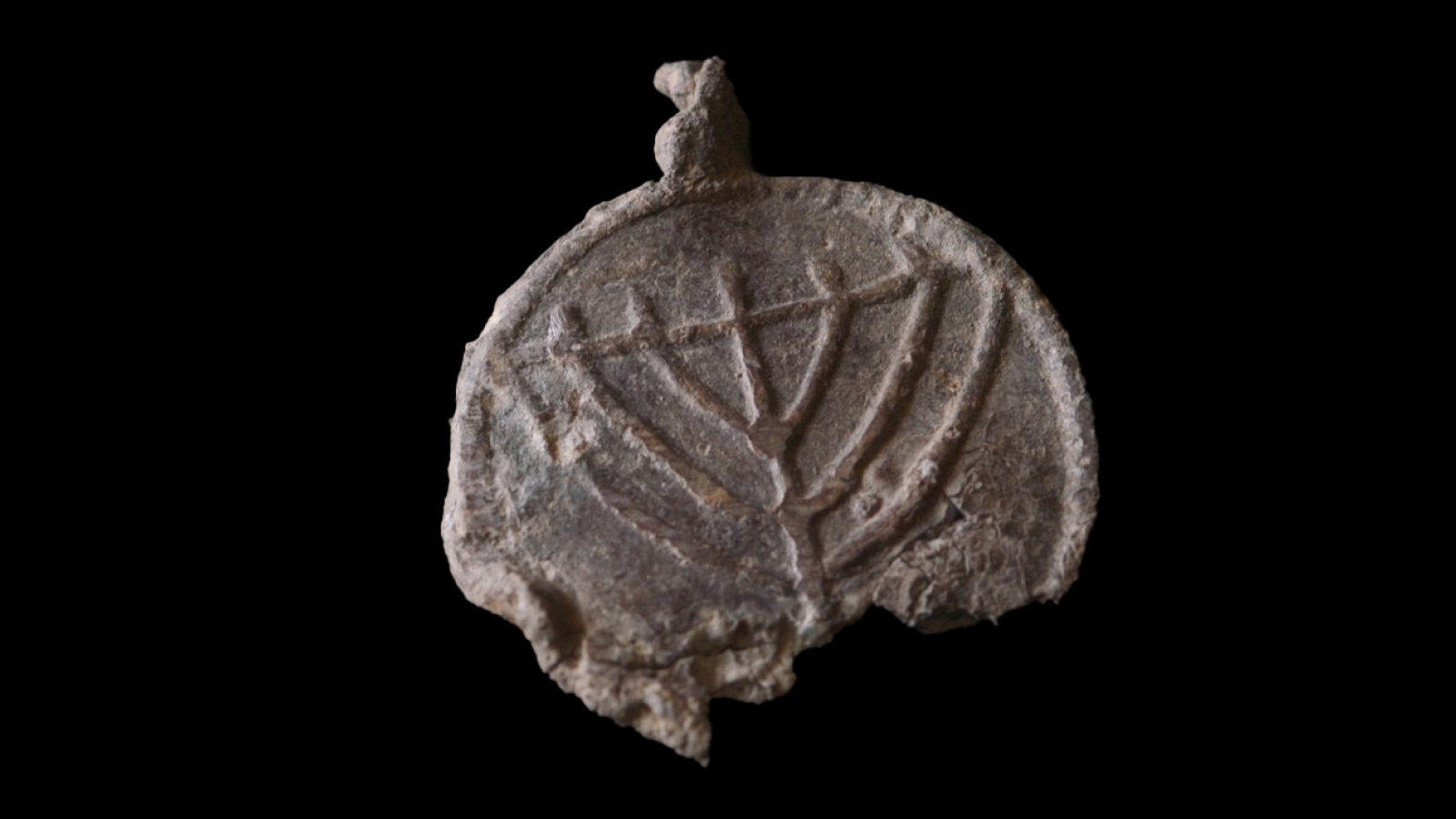Ancient tomb really does hold Alexander the Great's father, controversial study claims
Researchers used X-ray analyses to determine the occupants inside a trio of royal tombs in Greece.

Archaeologists may have finally identified the remains of Alexander the Great's father, half-brother and son in a trio of tombs at a necropolis in Greece.
Researchers have long debated which members of the Macedonian royal family were buried in each tomb. Now, a controversial new review suggests that researchers previously got the tombs mixed up and claim they have identified the actual occupants of each tomb.
Known as the "Great Tumulus," the burial site in Aegae, the original Macedonian capital (modern-day Vergina, a town in northern Greece), contains three tombs that were built during the fourth century B.C., according to a review published in the December 2023 issue of the Journal of Archaeological Science: Reports.
Researchers initially discovered the tomb complex in the 1970s and proposed that the crypts, known as Tombs I, II and III, contained the remains of several royals who were closely related to Alexander the Great, the Macedonian leader who reigned from 336 B.C. until his death in 323 B.C. Those individuals included Alexander the Great's father, King Philip II; his son, Alexander IV, whom he had with his wife Roxana; and his older half-brother, King Philip III Arrhidaeus.
However, there's been ongoing debate about which royal is interred in each tomb.
Related: 2nd-century Alexander the Great's tomb with lion's-mane hairstyle unearthed in Turkey
To determine the identities of the skeletons, the archaeologists behind the new review looked at ancient writings about each individual, including any injuries or skeletal anomalies that could help identify them, and compared these to X-rays of each skeleton.
Get the world’s most fascinating discoveries delivered straight to your inbox.
"It was like a fascinating detective's ancient story," review lead author Antonios Bartsiokas, professor emeritus of anthropology and paleoanthropology at the Democritus University of Thrace in Greece, told Live Science in an email.
Bartsiokas and colleagues identified King Philip II as the occupant of Tomb I based on the male skeleton's fused knee joint. The injury was "consistent with the historic evidence of the lameness of King Philip II," according to the review. He was buried alongside one of his wives, Queen Cleopatra, and their newborn child, the researchers suggested.
"This was the only newborn in the Macedonian dynasty to have died shortly after it was born," Bartsiokas said. "The age of the female skeleton at 18 years old was determined based on the epiphyseal lines [which show when the bone stopped growing] of her humerus. [This number] coincides with the age of Cleopatra from the ancient sources."
However, experts have long argued that King Philip II was actually buried in Tomb II, and not in Tomb I as the review concluded.
Because no physical trauma was found on the male skeleton in Tomb II, the new review concluded that he was King Philip III Arrhidaeus, who ruled Macedonia following Alexander the Great’s death. He was buried with his wife, Adea Eurydice, a "warrior woman who was leader of the army," Bartsiokas said. Her skeleton was surrounded by several pieces of weaponry, according to the review.
"His skeletal evidence and the pattern of his cremated bones have been shown to be consistent with the circumstances of the death of King Arrhidaeus and his wife," Bartsiokas said. "Tomb I was a very small and poor tomb and Tomb II was very big and rich. This ties with the historical evidence that Macedonia was in a state of bankruptcy when Alexander started his campaign and very rich when he died. This is consistent with Tomb I belonging to Philip II and Tomb II belonging to his son Arrhidaeus."
Moreover, the skeleton in Tomb II didn't have a tell-tale sign that has been associated with Philip II: an eye injury. Previous studies determined that the male skull in Tomb II showed a traumatic injury on the right side of the skull, but those claims have been refuted in several studies, including in this new review.
"Philip II is known from ancient sources to have suffered an eye injury that blinded him," Bartsiokas said. "I was surprised to find [the] absence of such an eye injury in the male skeleton of Tomb II, which was initially widely described as a real injury that identified Philip II. In other words, this was a case of a description of a morphologic feature that did not exist."
This detail also helped the researchers determine that Tomb II didn’t house Philip II’s remains. Of note, the part of the skull that would have held the eye injury in Tomb I was not preserved.
Lastly, researchers identified the occupant of Tomb III as Alexander IV, Alexander the Great's teenage son who was killed in a power struggle following his father's death — a conclusion that "most scholars agree" upon, the authors wrote in the review.
Ian Worthington, a professor of ancient history at Macquarie University in Sydney who was not involved in the review, told Live Science in an email that the "fascinating" review contained "rich analysis of forensic examinations and some historical context and mention of opposing views," but that he still thinks Philip II was buried in Tomb II.
"Among other things, crucially, is that the two chambers of Tomb II were built at different times, whereas the burial of Philip III and Eurydice was a planned double one, meaning the construction of both tombs should be contemporaneous," Worthington said.
Worthington also concluded that there is evidence of eye trauma in the skull fragments.
"There is also the significant issue of the trauma around the right eye of the skull from Tomb II, which is consistent with the wound that Philip suffered at Methone in 354 [B.C.] when a bolt from the ramparts struck him in the eye," Worthington said. "Even the undecorated walls of the tomb (in contrast to Tomb I) lean toward Philip II being the occupant, as we know that his son and successor Alexander III [had] to bury his father quickly to deal with a revolt of the Greeks and conduct a purge against opponents. Alexander planned to revisit the tomb and make it one to rival the pyramids, but he never did."
Bartsiokas, however, disagreed, saying that while Tomb II has undecorated walls, it has an elaborate facade on its front wall, an impressive antechamber and dual cremated burials, all of which would have taken a while to complete and making it a good candidate for being the tomb for Alexander's half-brother and sister-in-law. He also took issue with the idea that Tomb II had chambers built at different times, as previous research showed that "the remnants of the pyre were found on the roof of both chambers of Tomb II," he told Live Science in an email.
Worthington added that while we will likely not know for sure who the occupants are, Philip II is the most likely candidate. "Ultimately, no identification of the deceased in Tomb II can ever be 100% compelling in light of present evidence, analysis and reasoned historical argument, but on balance, the tomb is most likely that of Macedonia's greatest king, Philip II."
Editor's note: Updated at 12:33 p.m. EST on Feb. 15 to include an additional quote from Antonis Bartsiokas.
Editor's note: Updated at 4:39 p.m. EST to note that the skull in Tomb I did not preserve the portion that would have held the eye injury.
Jennifer Nalewicki is former Live Science staff writer and Salt Lake City-based journalist whose work has been featured in The New York Times, Smithsonian Magazine, Scientific American, Popular Mechanics and more. She covers several science topics from planet Earth to paleontology and archaeology to health and culture. Prior to freelancing, Jennifer held an Editor role at Time Inc. Jennifer has a bachelor's degree in Journalism from The University of Texas at Austin.



